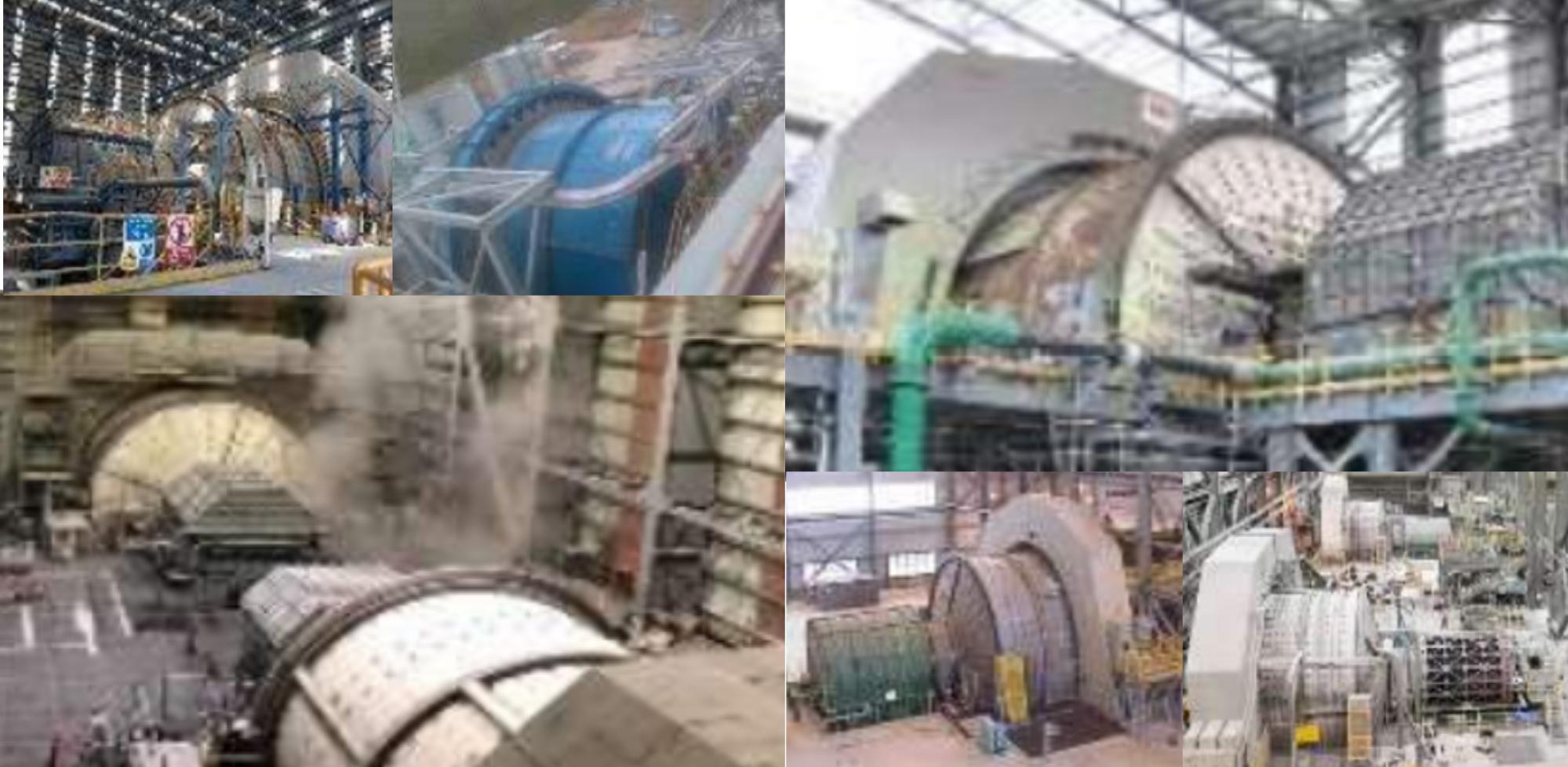EXPERIENCES IN SAG MILL OPERATION

OBJECTIVE :
- Describe in detail SAG mill circuits of large-scale plants and the benefits of each.
- Detail the issues occurred during SAG mill operation: blockage of grates, cracking of bolts, liners and grates, flowback, carry over; blockage and breakage of meshes from trommel and screen, among other relevant issues.
- Explain the improvements over time, such as mine to mill, types of grates, liners design, water for trommel and screen washing, sealing system of balls, recycling of balls scraps, among others.
INTRODUCTION
Grinding is one of the comminution stages where the mineral size is reduced to achieve a suitable particle-size distribution curve for copper flotation. As follows the purposes for executing a grinding stage
- Achieve a suitable release of the valuable ore.
- Increase the superficial area per mass unit aimed at speeding up certain physical-chemical processes.
“Autogenous” means auto generated or auto produced, from the Greek term of the same meaning. “Autogenous” was first referred to a mill by Robinson (1980) to Harlow Hardinge who used it in 1940 to describe the reduction mechanism of cascading mills.
In Peru, in 2001 took place the start-up of a large SAG mill, since then, many experiences have been acquired during its operation. Nowadays, five plants are operating with large SAG mills and another one is soon to be delivered. This course will present the different experiences, deviations and improvements occurred all this time, as well as the challenges to face in the future.
PARTICIPANTS
Engineers experienced in SAG mill operation who wish to expand their knowledge in the area.
Engineers of all areas of a mining unit who require to learn about SAG mill operation. To all those who know the basics of mineral grinding.
OUTLINE
- Important components of a SAG mill, description of each one.
- Description of the important variables in SAG mill.
- Timeline of start-ups of concentrators with SAG mill.
- Operational data of current large capacity SAG mills.
- Description of the SAG mill circuits from the concentrators
– Antamina
– Cerro Corona
– Antapaccay Chinalco
– Constancia
– Las bambas and Quellaveco. - Description of the deviances occurred during SAG mill operation;
– Blockage of grates.
– Cracking of bolts, liners and grates.
– Flowback and carry over.
– Obstruction and breakage of meshes from trommel and screen.
– Breakage and deformation of balls, among other relevant issues. - Improvements made such as mine to mill, types of grates, liners design, water use for trommel and screen washing, sealing ball system, recycling of balls scraps, among others.
- Challenges to face in the future to improve SAG mill operation, hybrid liners and large balls.
INSTRUCTOR : Eng. ANTONIO BRAVO
PRECIO : US$ 200
CONSULTA SOBRE ESTE CURSO
No dude en comunicarce con nosotros y de inmediato lo vamos a guiar en todo lo necesario.
NOTA : Los campos que poseen (*) son considerados obligatorios.

